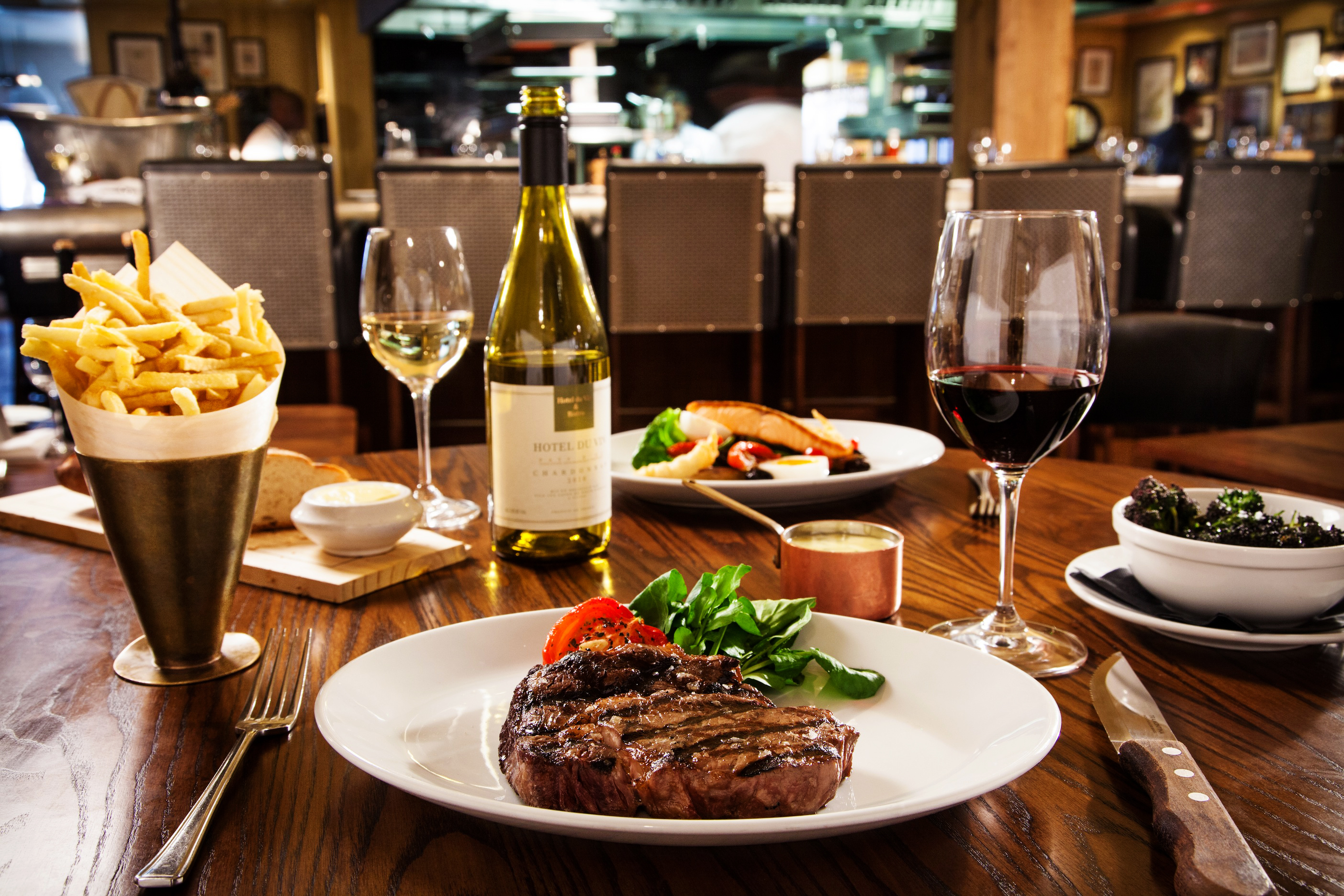So you just sat down at a restaurant.
With the menu in front of you and your fingers tapping to the slow rhythm of background music, you’re choosing what you’d like to eat.
Actually, you think you’re choosing, but you’re not.
You see, restaurants have many tricks up their sleeve, to make you spend more money. Some restaurants do it knowingly and willing, others copy what works for other restaurants without fulling understanding it themselves.
How do they do it?
They start with the ambiance
Everything you see, smell or hear is there for a reason.
The bar, the tabletops, the playlist, the hostess desk – they are all designed to lure you.
You look around and you’re satisfied with your choice.
What you don’t see is that the restaurant has chosen you too. Because all the things I just mentioned have been selected according to your age, your status, and your preferences.
You are their target audience. They know you well.
… and exploit your senses
Most likely, you are surrounded by warm colors. Shades of yellow, orange and red, because these colors are stimulants – they make you feel better and eat more.
Shades of purple, green or blue are considered appetite suppressants, so they are a no-no.
You might get a sniff of sweetness, some cheese-and-garlic freshly baked bread, a flame-grilled fragrance – anything that makes your nostrils swell and fill your lungs with that irresistible aroma.
Smell is the strongest sense, triggering the fastest and most intense reactions. Once your brain gets that sniff, it will first tell you that you want it and only after that, it will rationalize your desire.
The music you’re hearing is also intended to make you eat slower, stay longer and spend more. Exquisite restaurants might even try playing you with some classical music, which is known to make customers feel more affluent, therefore, more willing to spend.
The light is dimmed, to give you that feeling of coziness. The more relaxed you are, the more time you’ll spend. The more time you’ll have to smell the odors, to look through the menu and, again, to order some more.
They continue with the menu
Everything you read is designed to put the money you will spend in the background of what you choose. Simple, plain numbers, without zeros or dollar signs, will make the bill look like a far and insignificant thing.
They might rely on colors again – red, because it entices appetite, and yellow, because it draws attention. Sensory, mouthwatering words will describe the dishes they want you to order.
The order and distribution of dishes on different areas of the pages will bring their “favorite” dishes to your attention.
Most likely, that upper right-hand corner will feature what they want you to buy most since it’s the place where a reader’s eyes go first and stay more.
… and make expensive look inexpensive
That Steak Au Poivre at $40, followed by a Seared Jumbo Sea Scallops at $30 is strategically placed to make the next Grilled Crispy Skin Salmon at $24 look like a cheap dish.
This well-known anchoring technique is used with most menu designs – you display three successive dishes, with prices from the highest to the lowest, and you influence the customer to choose the less pricey item. Some restaurants will use advanced marketing and psychology tactics such as the decoy theory (asymmetric dominance) to get you to spend more money than you may otherwise have by getting you to select a more expensive dish.
Rest assured,
The beef is rich flavored, slowly cooked and tender;
The rice is deliciously crunchy;
The chicken breasts are succulent and joined by crispy skin;
The creamy hummus is drizzled with smoky PERi-PERi oil and ready to dig in with strips of warm pitta;
The almonds and the macadamias are fiery, ready to give you a crunch with a punch,
for some very good reasons! Aren’t you already drooling and feel the need to grab a bite of something? I sure am…
Then, some things are not as they seem
Most restaurants have some guilty secrets they don’t want you to know:
- Tricks that make dishes tastier but less healthy, to fuel your addiction for that dish;
- Shortcuts that save them time but take away from the quality of that dish;
- Things that make their life easier and that don’t kill you (because you don’t know it – yet).
For instance,
If that pizza is irresistibly delicious, it could have extra sugar even in the dough – if you love it (and who wouldn’t), next time you come you’ll probably order a bigger one.
The special dish – at some restaurants – might very well contain the ingredients they really need to get rid of ASAP.
That fancy, homemade (and pricier) dressing that you ordered could be a regular dressing, taken out from a one-gallon jar and “enriched” with some fresh herbs.
The homemade cake you’ve ordered for dessert could very well be homemade, but not at their… home. And the price of a slice is probably what they paid for a whole cake when they bought it from a local bakery.
Have you ever felt they’re forcing your hand at a restaurant? How did they do it? Was it obvious and pushy or was it smooth?
Opinions expressed here are opinions of the Author. Influencive does not endorse or review brands mentioned; does not and cannot investigate relationships with brands, products, and people mentioned and is up to the Author to disclose. Accounts and articles may be professional fee-based.

